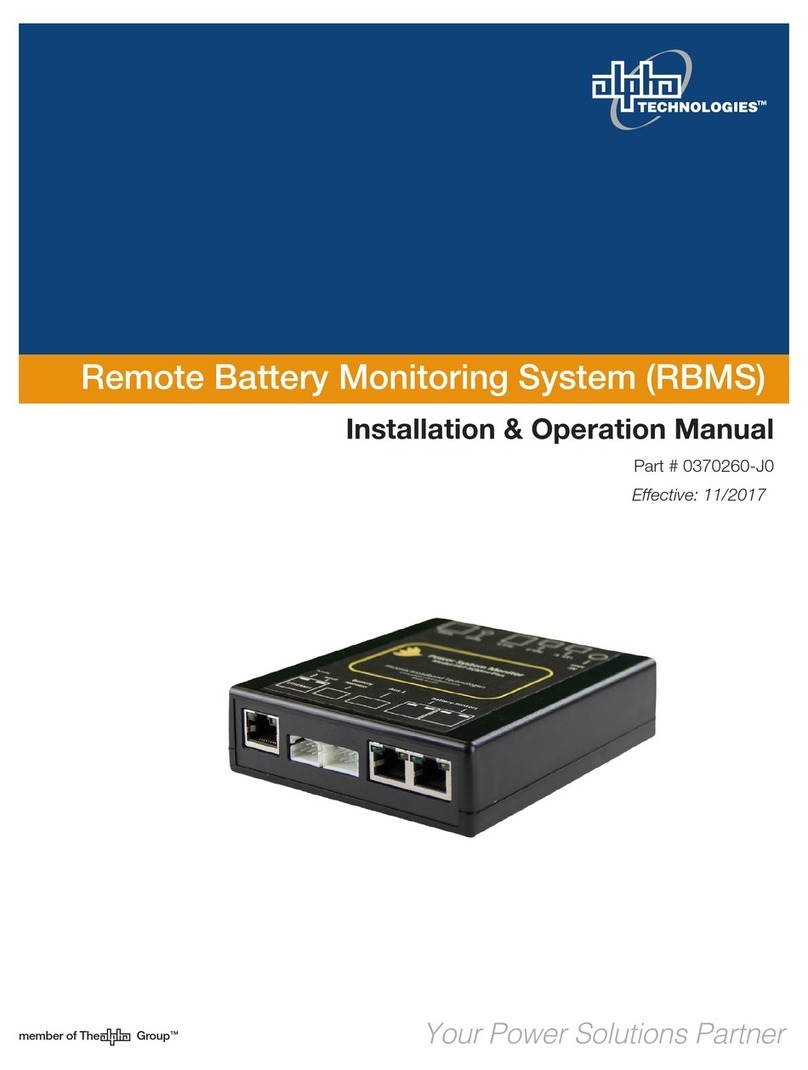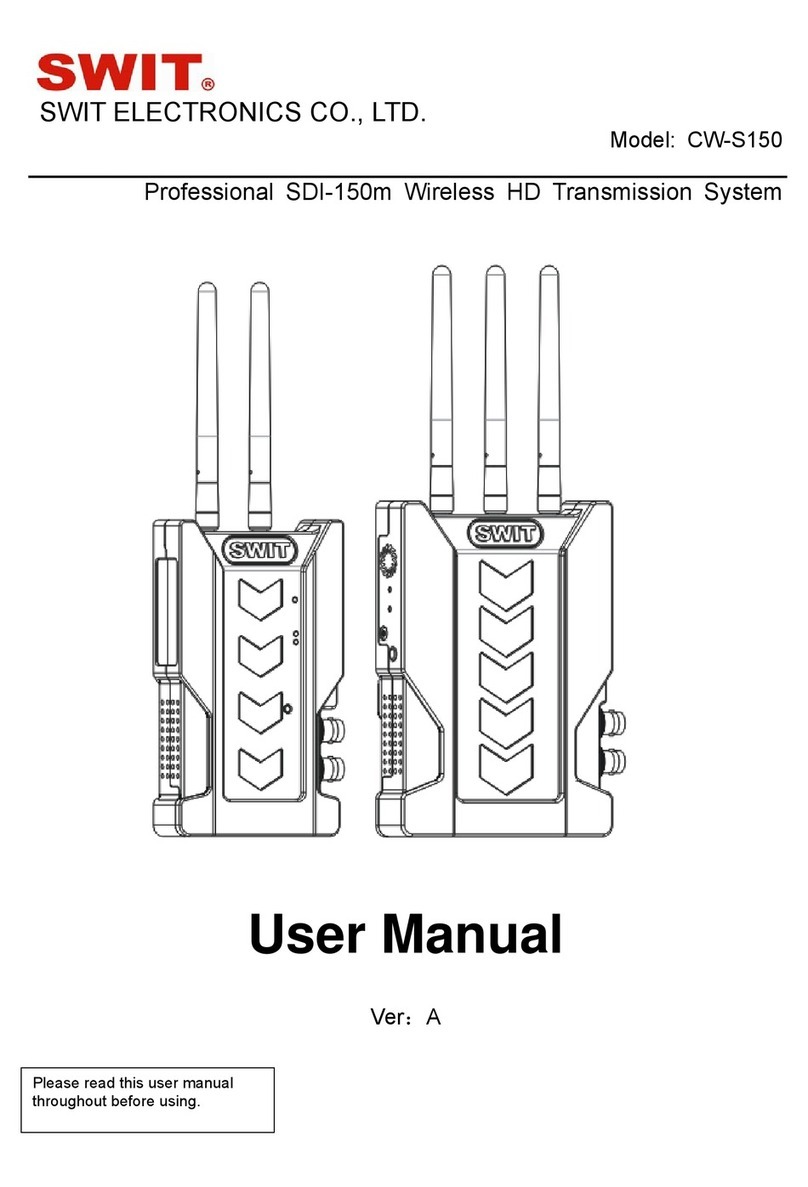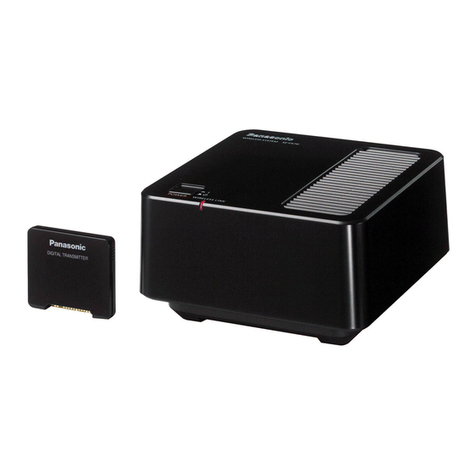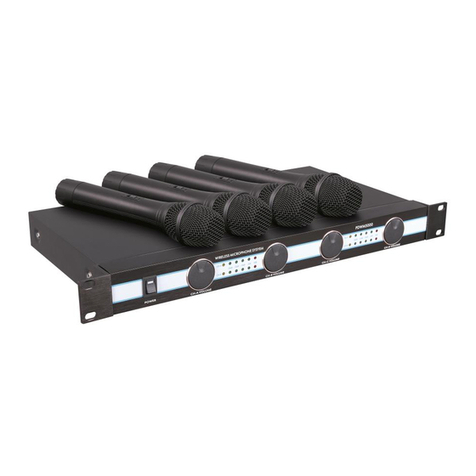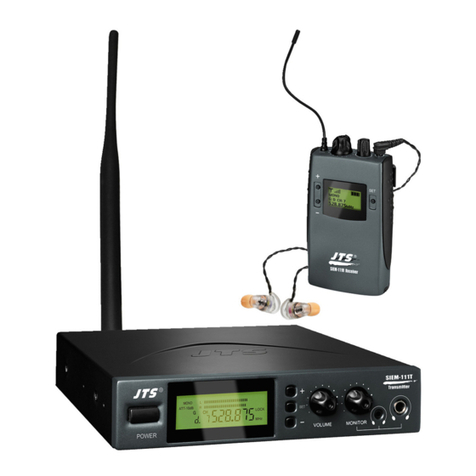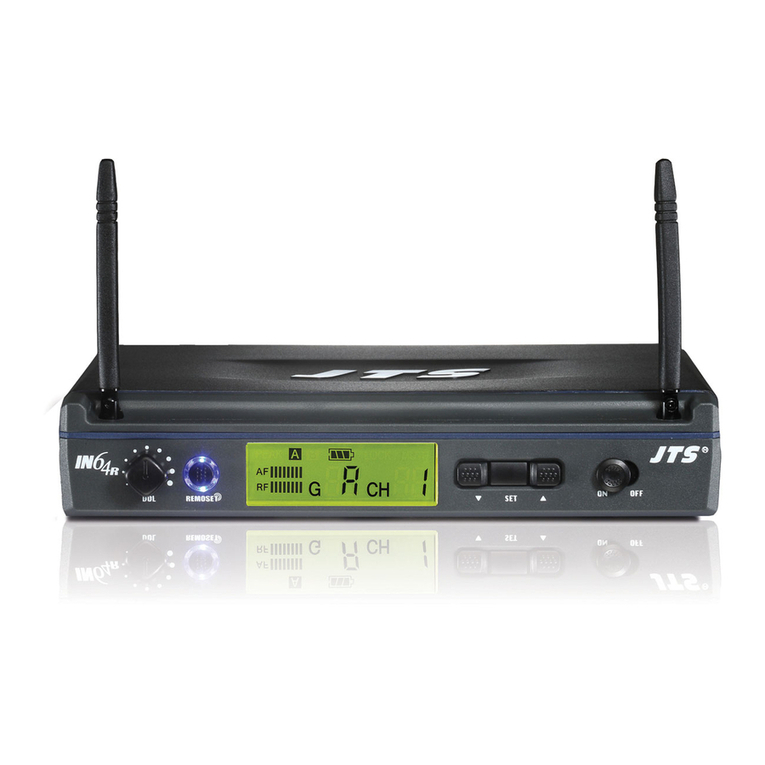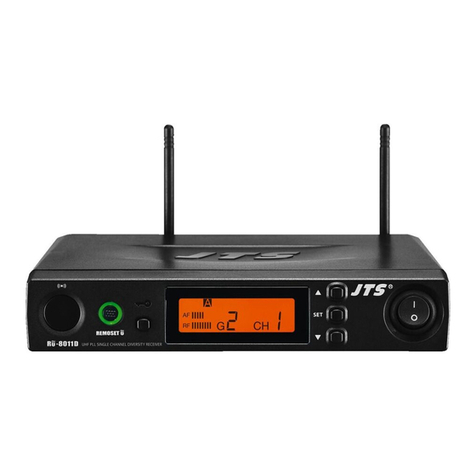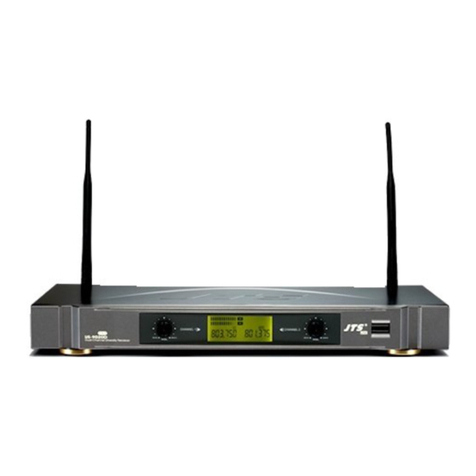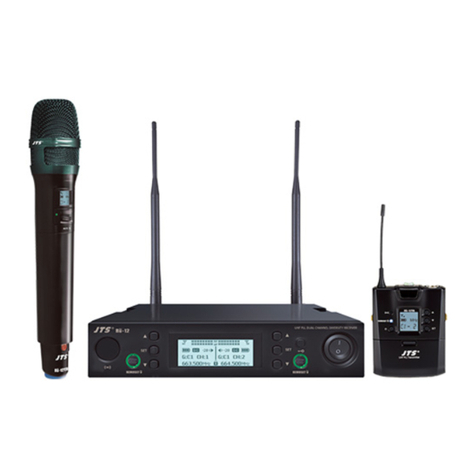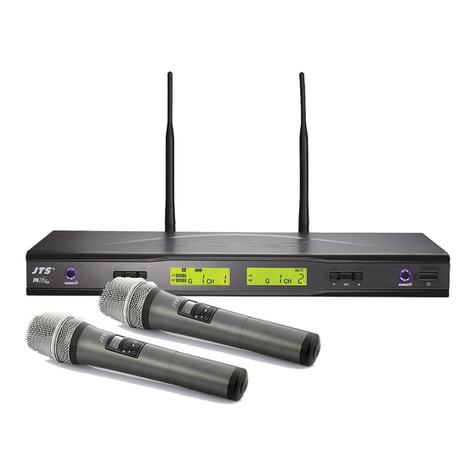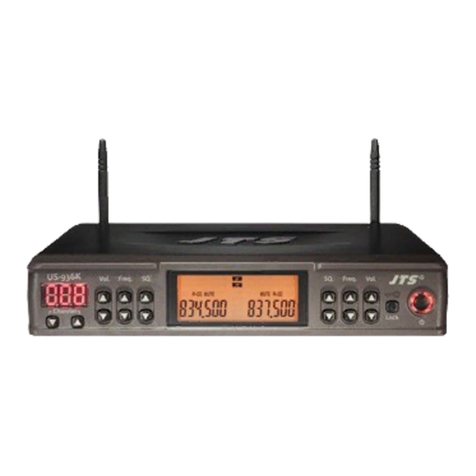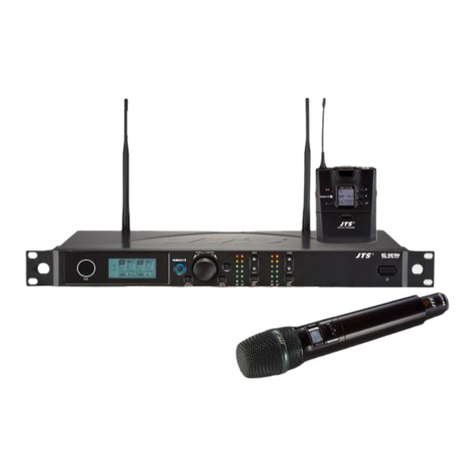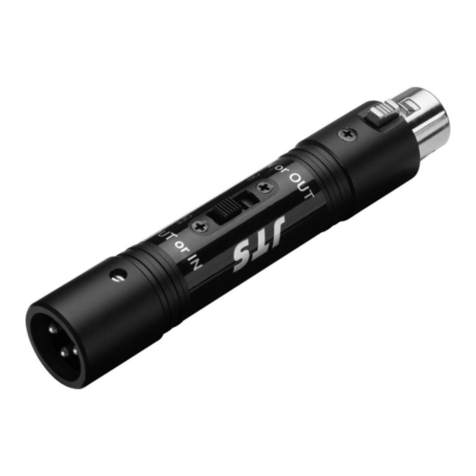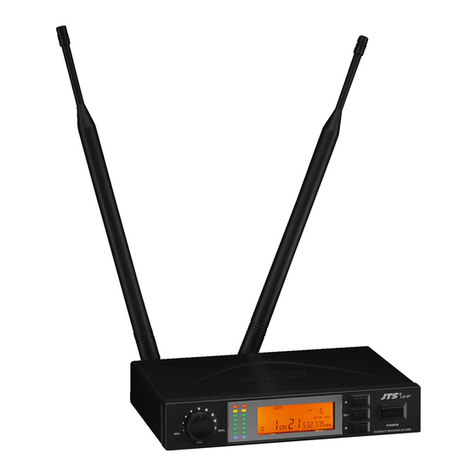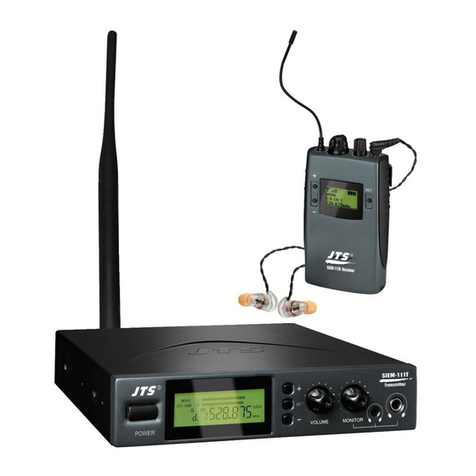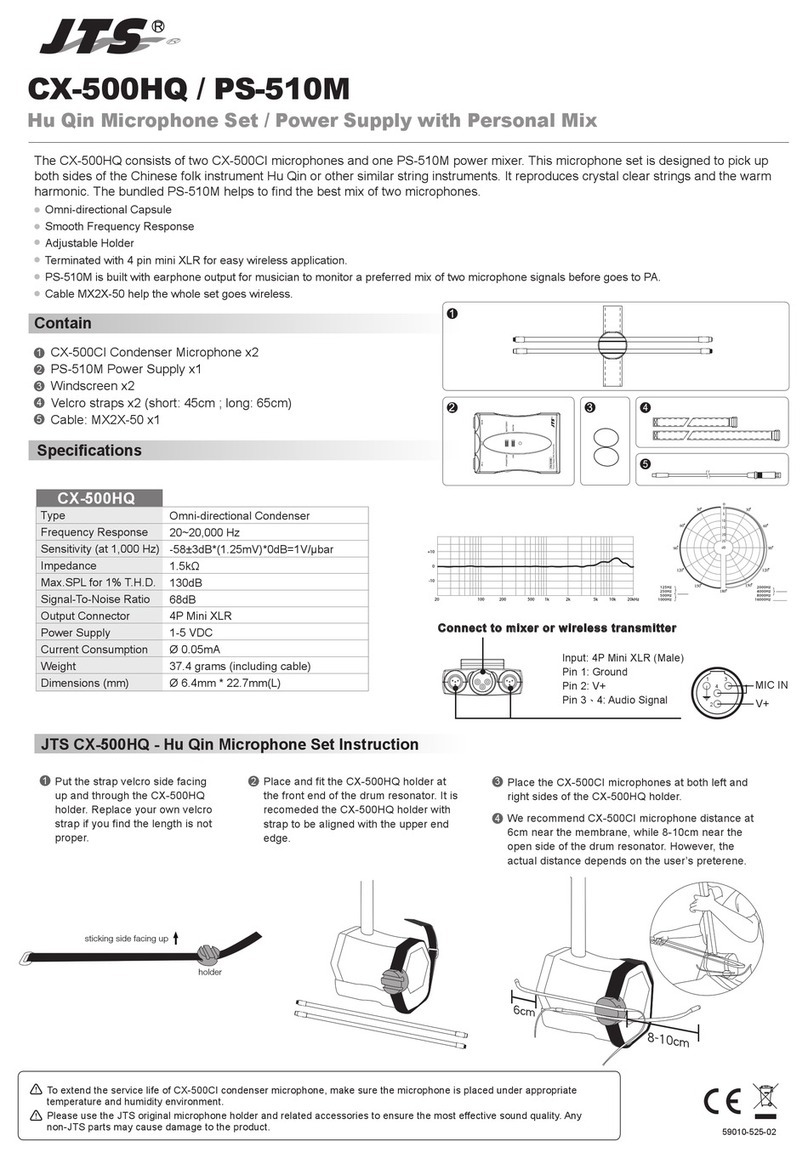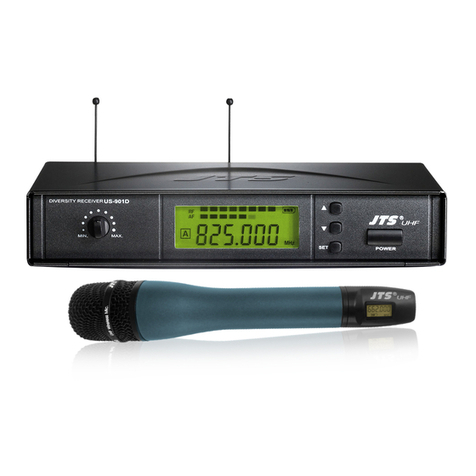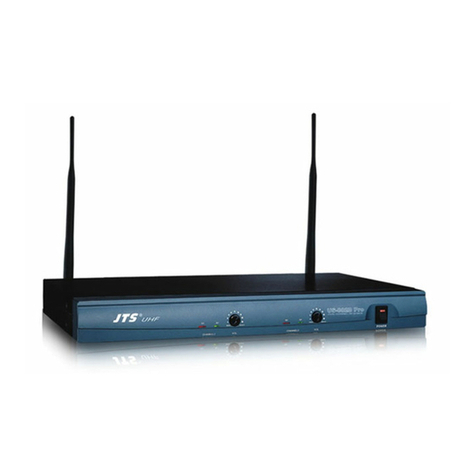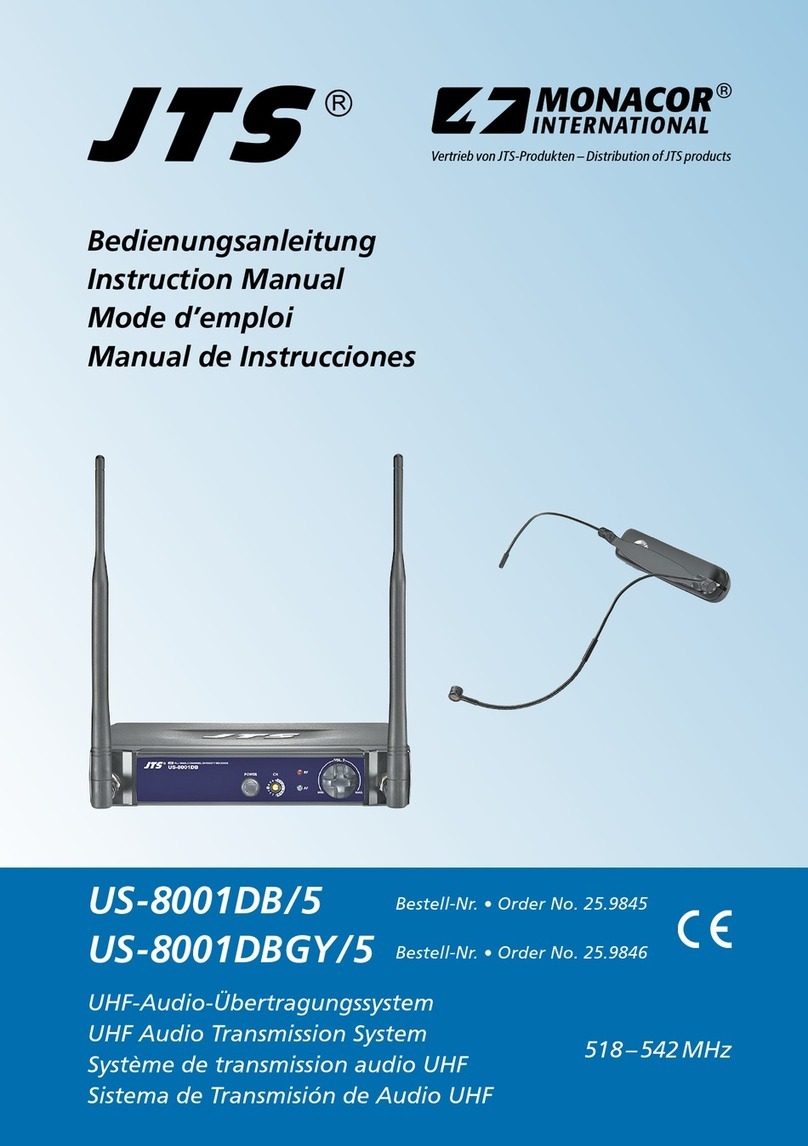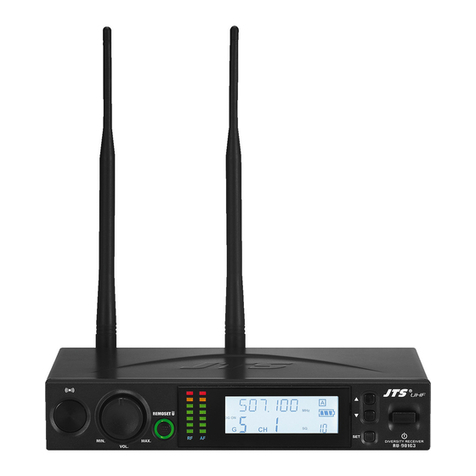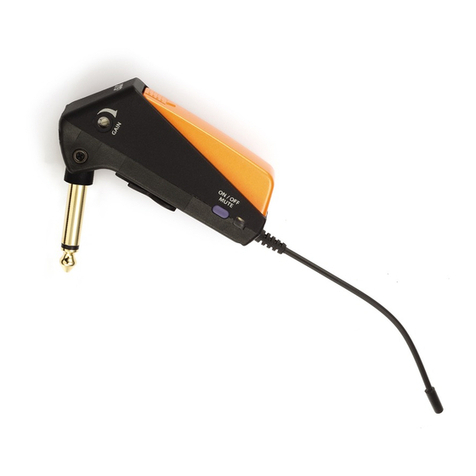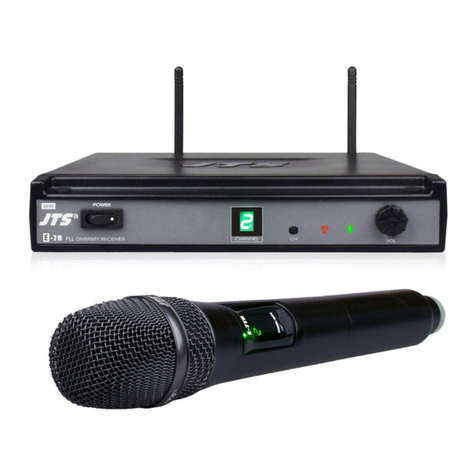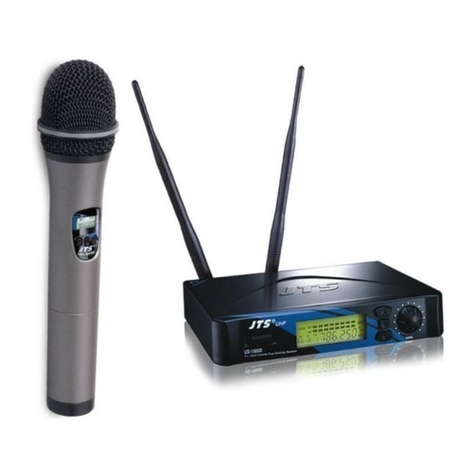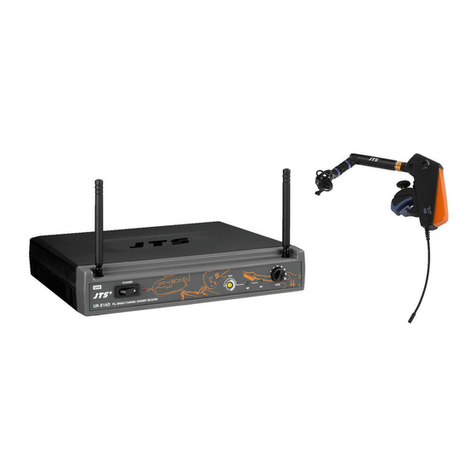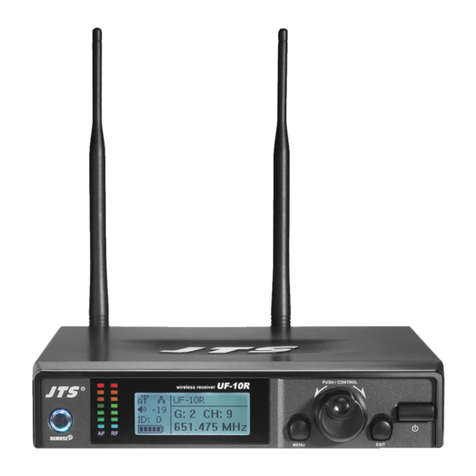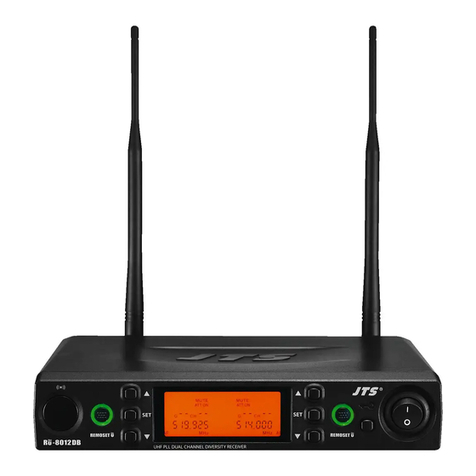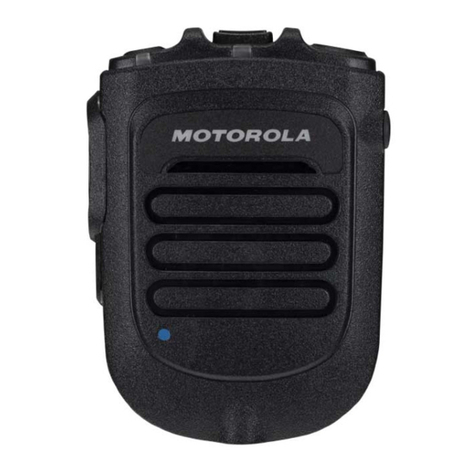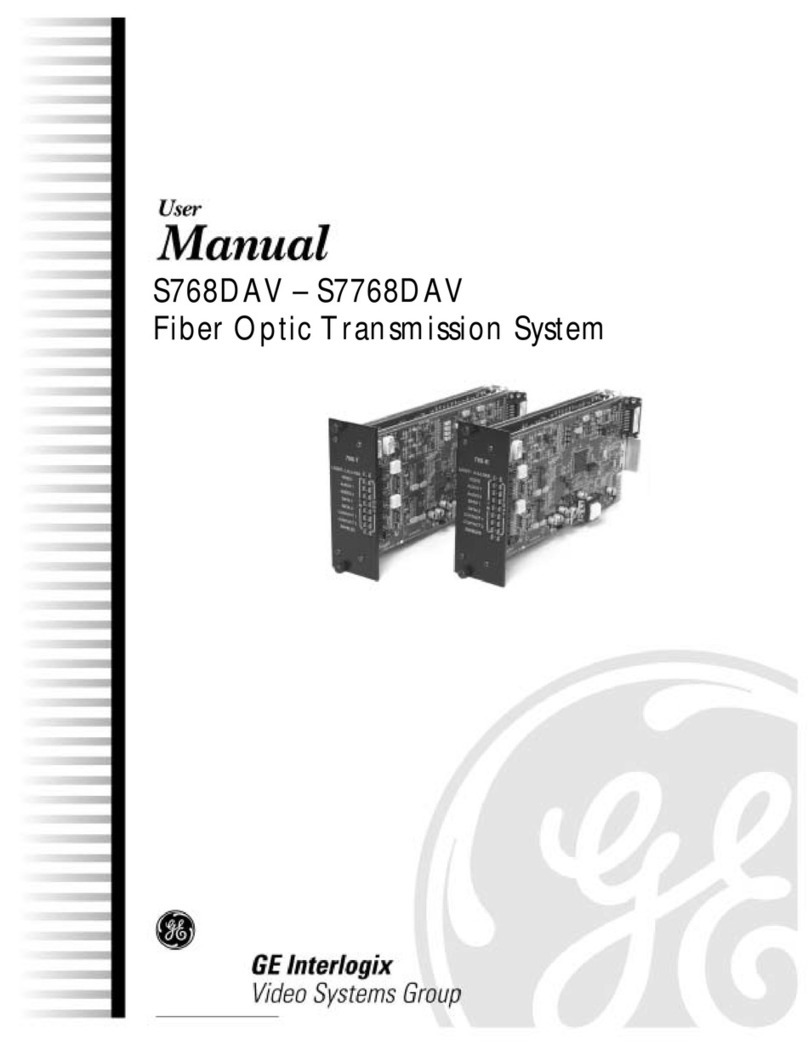WIRELESS MICROPHONE SYSTEM
12
1. Important Caution
2. Features
• Always makes all connections before plugging the unit into an AC power outlet.
• Do not leave the device in a place neither with high temperature nor high humidity.
• Always do not handle the power cord with wet hands!
• Keep the devices away from re and heat sources.
3. Specication
3-1 Receiver
3-2 Handheld Transmitter
Model No .........................................
Frequency Preparation..............
Carrier Frequency Range.......
S/N Ratio...........................................
T.H.D.................................
Display..............................
Display Contents...........................
Controls............................
Audio Output Level....................
AF Output Impedance..............
Squelch.............................
OperationVoltage.........................
Output Connector.......................
Dimension(m/m)...............
US-8001D(DB)/US-8002D(DB)/US-8216D
PLL Synthesized Control
502~960 MHz
> 105dB
<0.6%@1KHz
LED
Antenna A/B, RF/AF Status
Power On/O, Channel Selecting, Audio Level
-12dB
600Ω
Pilot Tone, Noise and Mute
US-8002D(DB)/US-8216D: 12-18 VDC, 200mA
US-8001D(DB): 12-18 VDC, 150mA
1 Balanced XLR socket
(2 for US-8002D(DB)/US-8216D)
1 Unbalanced Ø6.3mm phone jack
221mm (W)* 40mm (H)* 152mm (D)
Model No......................................
Frequency Preparation.........
Carrier FrequencyRange....
RF Outputs..................................
Stability............................................
Frequency Deviaion..............
LED Display................................
Controls..........................................
Spurious Emissions................
Audio Frequency Resonse
Baery..............................................
Mh-750 / Mh-850
PLL Synthesized Control
502~960 MHz
10mW
±10KHz
±48KHz
Low Baery, Power On/O
Power On/O,
Channel Selecting
<-50 dBC
50~16,000 Hz
UM3, AA 1.5V*2
Mh-8016( i )
PLL Synthesized Control
502~960 MHz
10mW
±10KHz
±48KHz
Power On/O,
Channel Up/Down
<-60 dBC
50~16,000 Hz
UM3, AA 1.5V*2
• Operated in UHF band where there is less RF interference than the VHF band.
• Due to the PLL synthesized technology, the system oer 16 selectable channel.
• e true diversity reception with 2 independent RF receivers ensure the stable transmission and
reception.
• Adjustable squelch control can eectively reduce the noise.
• Tuned antennas can benet the stable RF reception.
• Built-in Tone key Squelch & Noise Mute detection are available to restrain the interference
signal.
• Rugged metal housing can pass through the dicult environment.
• Equipped with balanced XLR and unbalanced output allows great convenience.
• Body-pack transmier provides phantom powering for condenser lavaliere and headset
microphones.

